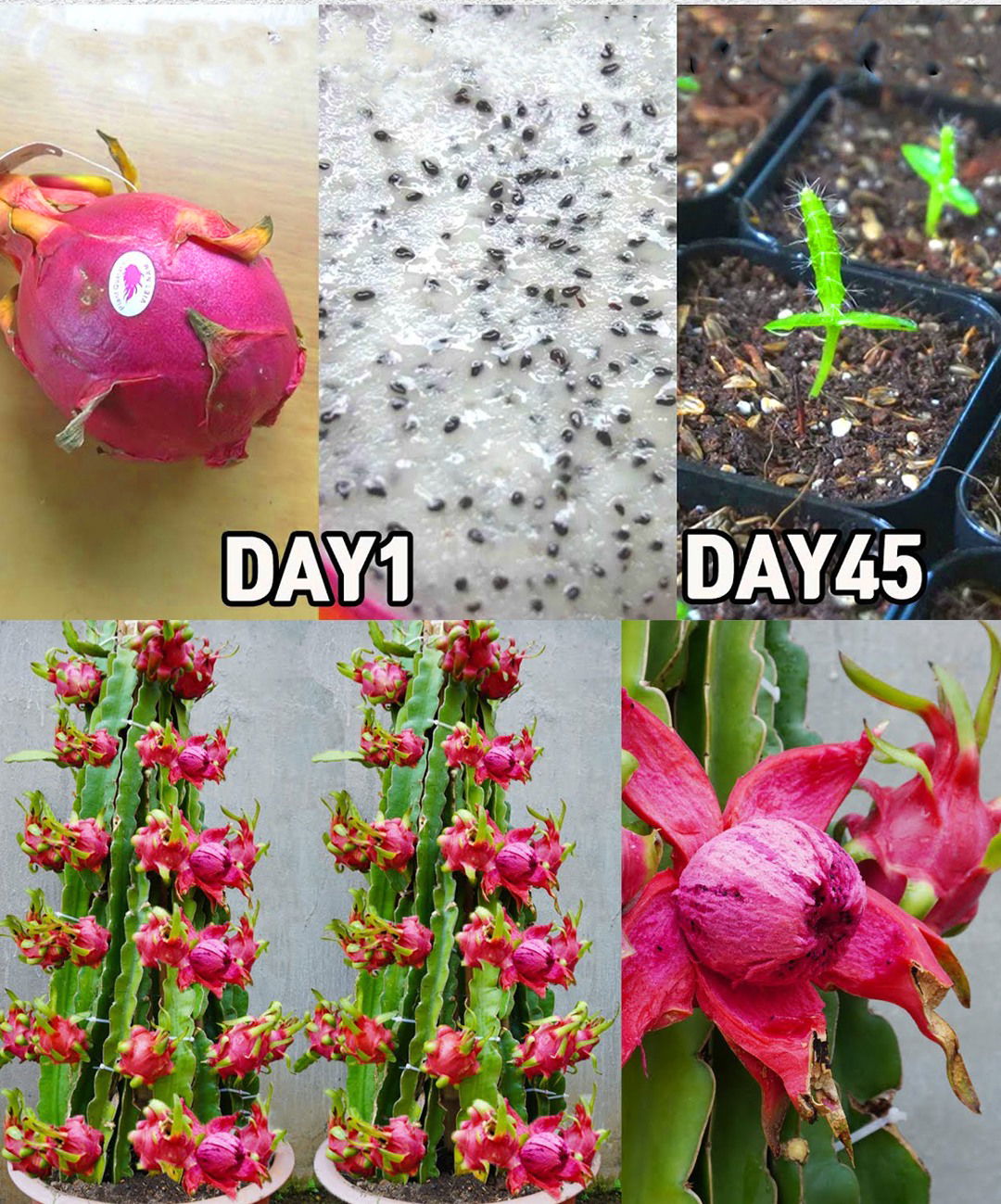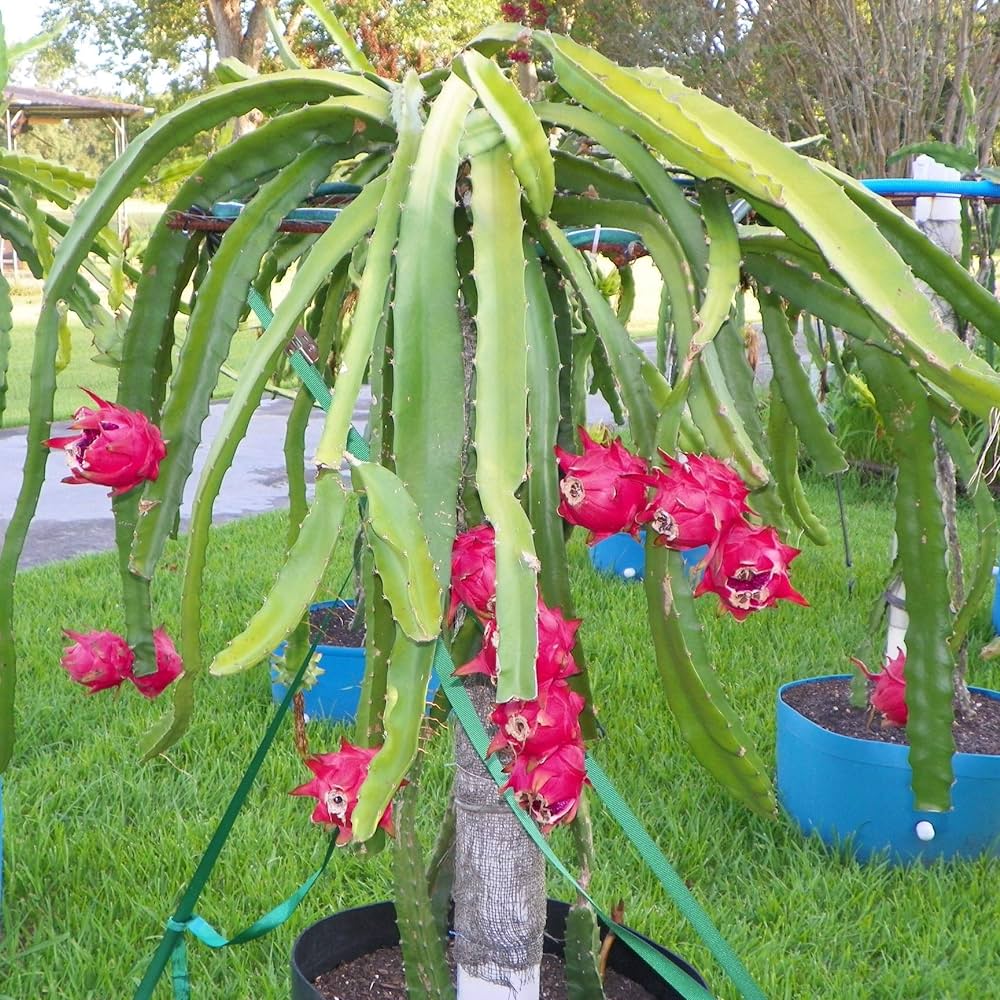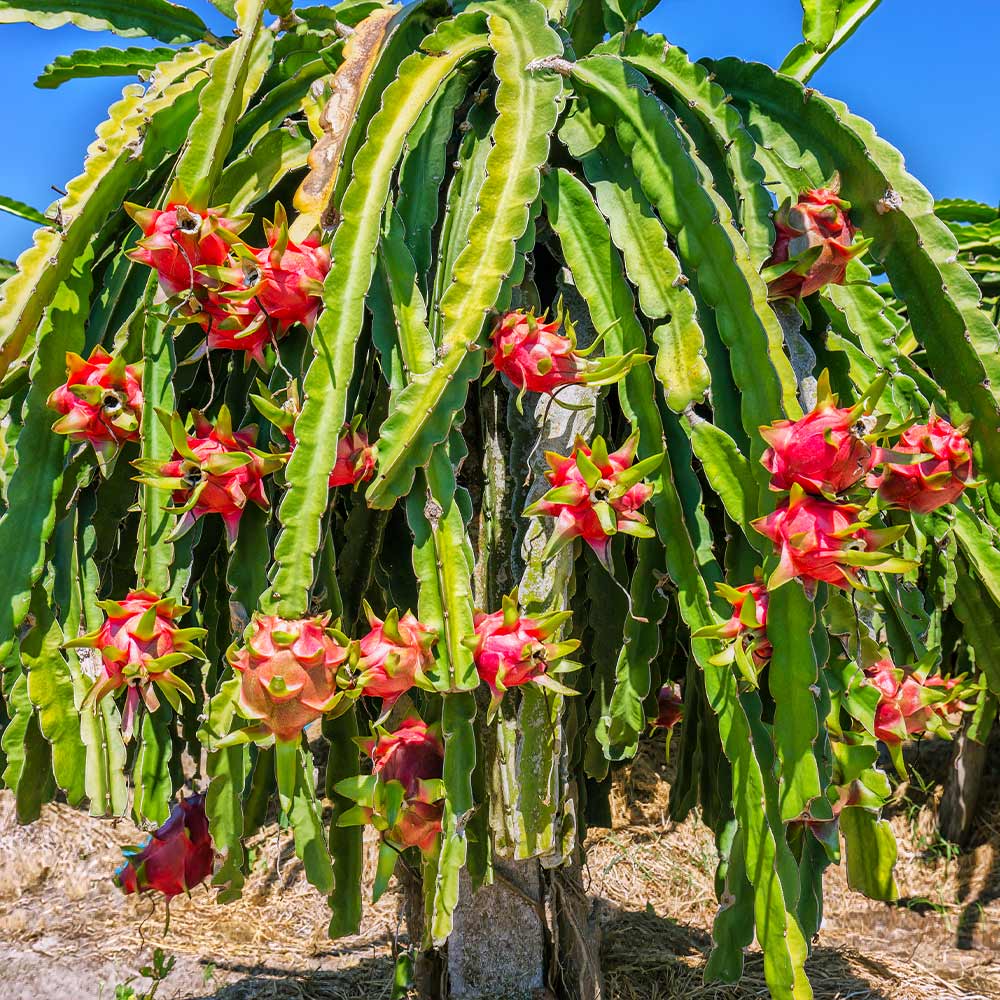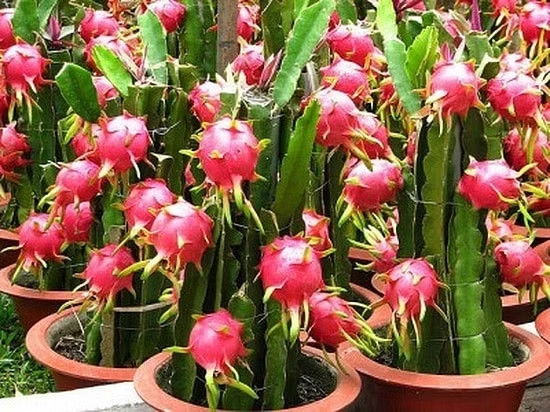
Dragon fruit, also known as pitaya or pitahaya, is a tropical fruit known for its vibrant red skin and sweet, seed-speckled pulp. Its unique look and acclaimed superfood status make it incredibly popular.
While it’s often eaten fresh, dragon fruit can also be used in smoothies, salads, and desserts. But did you know that you can grow this exotic fruit at home, even if you don’t live in the tropics? Here’s a comprehensive guide on growing dragon fruit in pots from seeds.
1. Getting the Seeds
Before you start planting, you need seeds. Here’s how to get them:
From a Dragon Fruit: Cut a dragon fruit in half and scoop out the seeds from the pulp. Clean the seeds by washing them to remove any attached pulp.
Buy Online: There are many online retailers that sell dragon fruit seeds.
2. Preparing the Seeds
Soaking: After cleaning the seeds, soak them in water for about 24 hours. This softens the outer shell and makes germination quicker.
3. Choosing the Right Pot

Size: Choose a pot that’s at least 15 inches deep and 24 inches in diameter. Dragon fruit plants have extensive root systems, and they need ample space to grow.
Drainage: Ensure that your pot has good drainage. This will prevent over-watering, which can cause root rot.
4. Soil Preparation
Type: Use a high-quality potting mix, preferably cactus or succulent mix as dragon fruit plants are a type of cactus.
pH Level: Ensure the soil pH is neutral, around 6 to 7.5.
5. Planting the Seeds
Planting Depth: Plant the seeds about 1/4 inch deep.
Spacing: Space the seeds about 2 to 3 inches apart.
Watering: Moisten the soil with water, but ensure it’s not drenched.
6. Germination

Temperature: Dragon fruit seeds germinate best at temperatures between 70 to 85°F (21 to 29°C).
Location: Place the pot in a warm, sunny location. If you’re growing them indoors, a sunny windowsill or under grow lights are ideal.
7. Caring for Your Dragon Fruit Plant
Watering: Water when the top inch of the soil feels dry. Dragon fruit plants are drought-resistant, so be careful not to over-water.
Feeding: Once your plants are established (after 5-6 months), feed them with a balanced fertilizer every month during the growing season.
Support: As your plant grows, it will need support. Install a trellis or stake to help support your dragon fruit plant.
8. Harvesting

Once your plant matures, which may take a couple of years, it will produce fruit. Harvest the dragon fruit when its skin is bright red or pink, and it’s slightly soft to the touch.
In Conclusion
Growing dragon fruit in pots from seeds is a rewarding experience. It might take time and patience, but the result is a delicious, homegrown fruit that’s packed with nutrients. Whether you’re a gardening newbie or a seasoned pro, with the right care, you can enjoy your very own dragon fruit harvest.



















